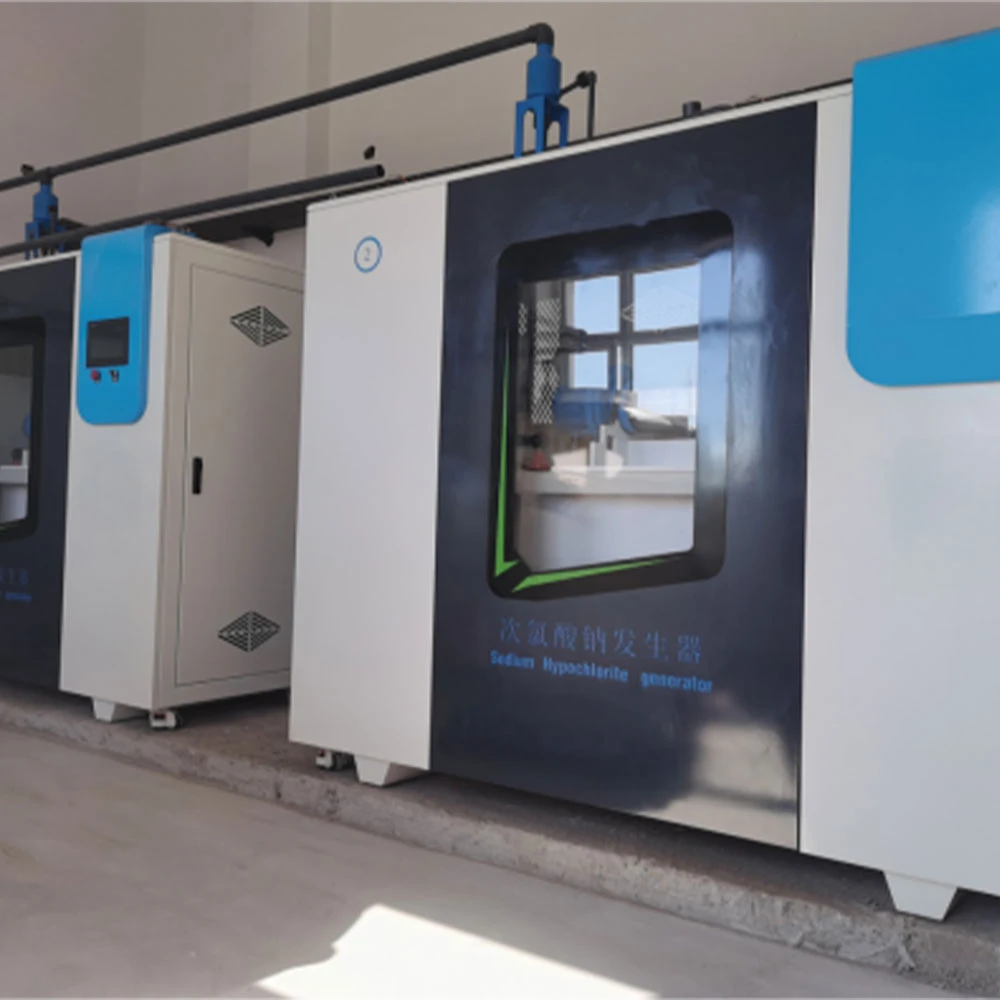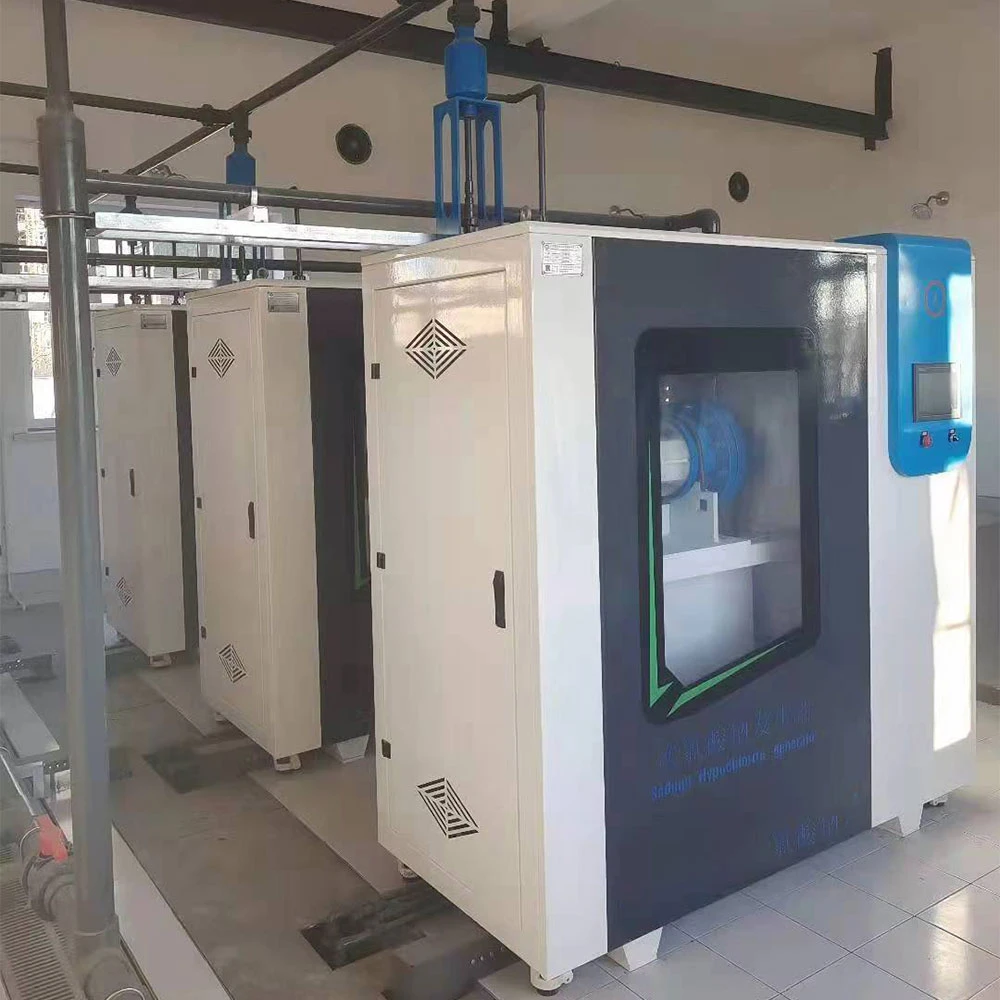1. Introduction
Power plants require efficient cooling water systems to maintain optimal operations. Cooling water treatment is critical to prevent scaling, corrosion, and also biofouling. Traditional disinfection methods, such as chlorine gas or commercial bleach, pose safety and environmental risks.
Meanwhile, sodium hypochlorite (NaClO) generators offer a safer, more efficient alternative. These systems produce disinfectant on-site, ensuring consistent water quality. Therefore, this article explores the technical advantages of NaClO generators in power plant cooling water treatment.
2. How Sodium Hypochlorite Generators Work
NaClO generators produce hypochlorite solution through electrolysis. The process involves:
Saltwater Preparation: A brine solution (NaCl + water) is prepared.
Electrolysis: At the same time, an electric current splits saltwater into sodium hypochlorite and hydrogen gas.
Dosing: The generated NaClO is injected into the cooling water system.
This on-demand production eliminates storage hazards. It also ensures a steady supply of disinfectant.

3. Key Technical Advantages
3.1 Enhanced Safety
No Hazardous Chemical Storage: Unlike chlorine gas, NaClO is generate on-site, reducing storage risks.
No Toxic Byproducts: Hydrogen gas, the only byproduct, is also safely vented or used as fuel.
Reduced Worker Exposure: Operators avoid handling dangerous chemicals.
3.2 Cost Efficiency
Lower Chemical Costs: Salt is cheaper than commercial bleach or chlorine gas.
Reduced Transportation Costs: On-site generation eliminates bulk chemical deliveries.
Minimal Maintenance: Modern generators have automated controls, reducing labor costs.
3.3 Improved Water Treatment Performance
Consistent Disinfection: On-demand production maintains stable chlorine residuals.
Effective Biofouling Control: NaClO kills bacteria, algae, and biofilm more efficiently than traditional methods.
Reduced Scaling & Corrosion: Proper dosing prevents mineral buildup and pipe degradation.
3.4 Environmental Benefits
No Harmful Residues: NaClO decomposes into salt and water, and also leaving no toxic traces.
Lower Carbon Footprint: Reduced chemical transport decreases emissions.
Compliance with Regulations: Meets strict environmental and safety standards.
3.5 Operational Flexibility
Scalable Systems: Generators can be adjusted based on cooling water demand.
Automated Controls: Modern systems integrate with SCADA for real-time monitoring.
Adaptability to Water Quality: Effective in both freshwater and seawater applications.
4. Comparison with Traditional Disinfection Methods
4.1 Chlorine Gas
Risks: Highly toxic, requires strict handling procedures.
Regulatory Challenges: Increasing restrictions due to safety concerns.
Disadvantages: Forms harmful disinfection byproducts (DBPs).
4.2 Commercial Bleach (Liquid NaOCl)
Instability: Degrades over time, losing effectiveness.
High Transport Costs: Requires frequent deliveries.
pH Sensitivity: Less effective in alkaline water.
4.3 Bromine & Ozone
Higher Costs: More expensive than NaClO generation.
Complex Systems: Require additional equipment and maintenance.
NaClO generators outperform these methods in safety, cost, and efficiency.

5. Conclusion
Sodium hypochlorite generators provide a safe, cost-effective, and also environmentally friendly solution for power plant cooling water treatment. Their ability to produce disinfectant on-demand ensures consistent performance while reducing risks associated with traditional methods.
As regulations tighten and sustainability becomes a priority, NaClO generators will also play an increasingly vital role in power plant operations. Investing in this technology enhances efficiency, reduces costs, and also supports long-term environmental goals.
FAQ
1. Why use a sodium hypochlorite generator for cooling water treatment?
On-site production: Eliminates the need for storing and handling hazardous liquid bleach.
Cost-effective: Reduces chemical transportation and storage costs.
Eco-friendly: Produces a non-toxic biocide without harmful byproducts.
Effective microbial control: Helps prevent biofilm, algae, and also Legionella growth in cooling towers.
2. How much salt and power does the system consume?
The salt and power consumption depend on the generator’s capacity and cooling water demand. Typically:
Salt usage: ~3.8 kg of salt per kg of chlorine produced
Power consumption: ~4.5 kWh per kg of chlorine
3. How is the sodium hypochlorite dosed into the cooling water?
Firstly, the system automatically doses the generated NaClO solution into the cooling water using a metering pump. The dosing rate is controlled based on:
Residual chlorine levels (measured by an ORP/pH controller)
Flow rate of cooling water
System demand (e.g., seasonal variations in microbial growth)
